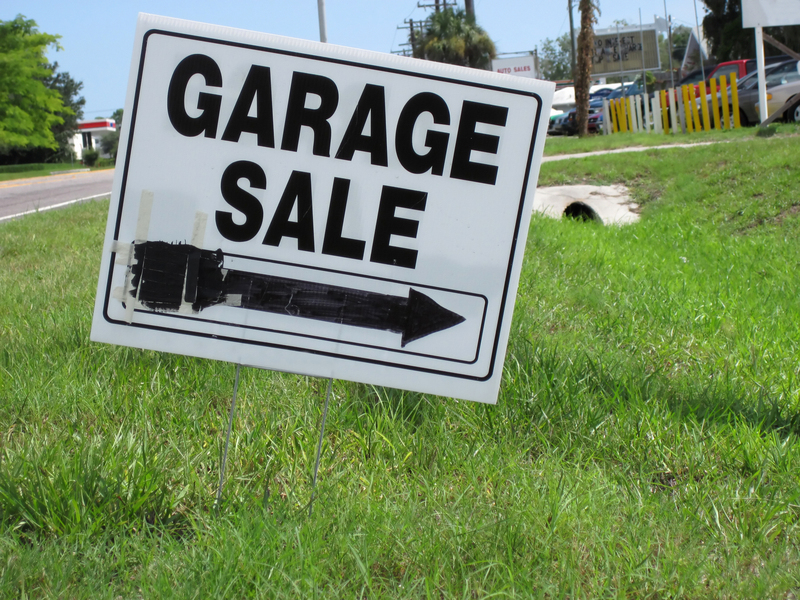The Eco-Savvy Approach to Disposing of Pots and Pans
In today's environmentally conscious world, disposing of pots and pans isn't as simple as tossing them in the trash. As consumers become more aware of the environmental impact of household waste, adopting eco-savvy strategies for discarding cookware is essential. Whether your culinary companions have lost their nonstick coating, are warped beyond use, or simply need upgrading, responsible disposal ensures you aren't inadvertently harming the environment. This comprehensive guide covers everything you need to know about the eco-friendly disposal of pots and pans.

Why Proper Disposal of Cookware Matters
Discarded cookware--ranging from stainless steel pots to Teflon-coated pans--often ends up in landfills where it doesn't decompose easily. Some cookware can leach harmful substances into the soil and water supply. By making eco-conscious choices when disposing of old pots and pans, you help minimize environmental pollution and support sustainable living.
- Cookware contains valuable resources that can be reused or recycled, reducing demand for raw materials.
- Poor disposal contributes to landfill growth and pollution.
- Some pots and pans may release toxins if not handled correctly.
Common Materials in Pots and Pans
Most household cookware consists of the following materials, each of which impacts disposal methods:
- Stainless steel
- Aluminum
- Cast iron
- Copper
- Non-stick coatings (such as Teflon)
- Ceramic and enameled surfaces
Understanding the material of your cookware is the first step towards making an eco-savvy disposal decision.
Eco-Friendly Disposal Methods for Pots and Pans
1. Donate Usable Cookware
If your pots and pans are still functional, the most sustainable step is prolonging their life. Donating helps divert items from landfills and supports households in need.
- Local charities and shelters often accept gently used cookware.
- Community centers may welcome donations for communal kitchens or fundraising events.
- Check online groups like Freecycle, Buy Nothing, or Facebook Marketplace.
Pro Tip: Clean and inspect your cookware before donating to ensure it's safe and appealing for others.
2. Upcycling: Creative Repurposing of Old Pots and Pans
Before considering recycling or landfill, explore creative upcycling. Repurposing old cookware is both fun and environmentally friendly.
- Planters: Turn saucepans and stockpots into quirky garden containers.
- Organizers: Hang pans for unique wall-mounted storage or utensil racks.
- Craft projects: With a splash of paint, pans can become clocks, art pieces, or serving trays.
Upcycling not only gives your cookware a second life, it adds a personal touch to your home or garden.
3. Recycling: The Most Eco-Friendly Option
Recycling is often the most responsible way to dispose of pots and pans that are no longer usable. However, cookware recycling depends on the type and local regulations.
- Metal recycling facilities accept most stainless steel, aluminum, and cast iron items.
- Remove any plastic, wood, or non-metal elements before recycling.
- Check with your local recycling center for specific requirements; some accept cookware curbside, others only at designated drop-off locations.
Note: Non-stick and ceramic coatings complicate recycling. Some centers cannot accept Teflon-coated pans, so always confirm before dropping off!
4. Specialty Recycling Programs
For difficult-to-recycle items (like non-stick pots and pans), specialty programs provide an eco-savvy solution.
- TerraCycle: National recycling programs accept complex cookware materials for a fee or through sponsored events.
- Some cookware brands, such as Calphalon or GreenPan, offer take-back programs for used items.
- Retailers like Sur La Table periodically hold cookware recycling drives.
These initiatives often ensure that even tricky materials are routed back into the raw material stream, closing the recycling loop.
Disposing Pots and Pans by Material
The right eco-savvy approach to disposing of pots and pans depends on their material composition. Here's what to do with each type:
Stainless Steel and Cast Iron
- Highly durable, these metals are prized by scrap yards.
- Simply remove non-metal parts (such as handles or glass lids).
- Drop off at scrap metal or recycling centers.
- Some municipalities accept these items in curbside metal collections.
Aluminum Cookware
- Lightweight and valuable, aluminum is easy to recycle.
- Clean thoroughly to remove food residues.
- Check if your curbside program accepts aluminum pots and pans, or take to a scrap yard.
Non-Stick and Teflon-Coated Pans
- Most curbside programs do not accept non-stick pans because of chemical coatings.
- Remove handles and separate metal before taking to special recycling facilities, if available.
- Consider contacting the manufacturer about take-back or recycling options.
Ceramic and Enameled Pots
- Full ceramic or enameled cookware may be reusable as garden markers or upcycled projects.
- Most recycling facilities do not accept ceramics, but some specialty programs or art centers will.
- Check with local reuse stores for possible acceptance.
Copper Cookware
- Copper is highly recyclable and valued by scrap yards.
- Remove any plastic or wooden handles before dropping off.
- If cookware is antique or of high quality, consider reselling or donating.
What Not to Do: Avoid Unsustainable Disposal Practices
For anyone hoping to adopt an eco-savvy approach to disposing of cookware, here are some critical mistakes to avoid:
- Don't mix cookware with regular household trash--this sends valuable resources to landfill.
- Don't burn cookware to remove coatings; this releases hazardous fumes and pollutes air quality.
- Don't dump pots and pans outdoors; metals can rust and leach toxins into soil and water.
- Don't recycle improperly--items contaminated with non-metal parts or non-stick coatings may ruin recycling batches.
Bonus: Where to Find Eco-Friendly Pots and Pans
After responsibly disposing of your old cookware, consider investing in eco-friendly replacements for your kitchen. Look for:
- Recycled content: Choose brands that use recycled metals and sustainable materials.
- Eco-safe coatings: Avoid cookware with PTFE or PFOA coatings, and opt for ceramic or natural alternatives.
- Long-lasting durability: Cast iron, stainless steel, and copper hold up well and can last generations.
- Recyclable design: Seek products that are easy to disassemble and recycle at end of life.
Green Brands and Certifications
Many companies now prioritize sustainability by offering eco-savvy cookware lines, such as GreenPan, Caraway, and Made In. Look for certifications like Cradle to Cradle, GreenGuard, or ISO 14001 for assurance of environmentally friendly manufacturing.

Frequently Asked Questions about Eco-Friendly Pots and Pan Disposal
Can I put old pots and pans in my curbside recycling?
Often, no. Many curbside recycling programs do not accept cookware due to its weight, shape, and mixed materials. Always check local guidelines or use designated metal recycling drop-offs.
Are non-stick pans recyclable?
Not through most standard recycling services. Their coatings complicate processing. Look for specialty mail-in programs or manufacturer take-back initiatives for non-stick eco-savvy pan disposal.
Is it safe to donate old cookware?
If it is in good, usable condition and free of major defects (such as flaking coating or warping), yes! Always clean items thoroughly before donating.
What should I do with glass lids?
Most recycling centers do not accept heat-resistant glass (like Pyrex). Consider reusing, donating, or repurposing as garden covers or art projects.
Conclusion: Your Eco-Savvy Guide to Disposing of Pots and Pans
Adopting an eco-savvy approach to disposing of pots and pans is a rewarding way to protect the environment, conserve resources, and support your community. Whether you opt to donate, upcycle, or recycle, making mindful choices ensures your old cookware doesn't become part of the mounting landfill problem.
Whenever possible, invest in sustainable, high-quality pots and pans designed for longevity and easy recycling at the end of their life. Staying informed about local disposal and recycling programs, as well as innovative upcycling ideas, empowers you to make environmentally responsible decisions that truly make a difference.
By following this comprehensive guide, you'll not only lighten the environmental footprint of your kitchen upgrades but also inspire others in your community to adopt the same eco-conscious standards. Say goodbye to cookware waste, and hello to a greener, cleaner planet--one pan at a time!